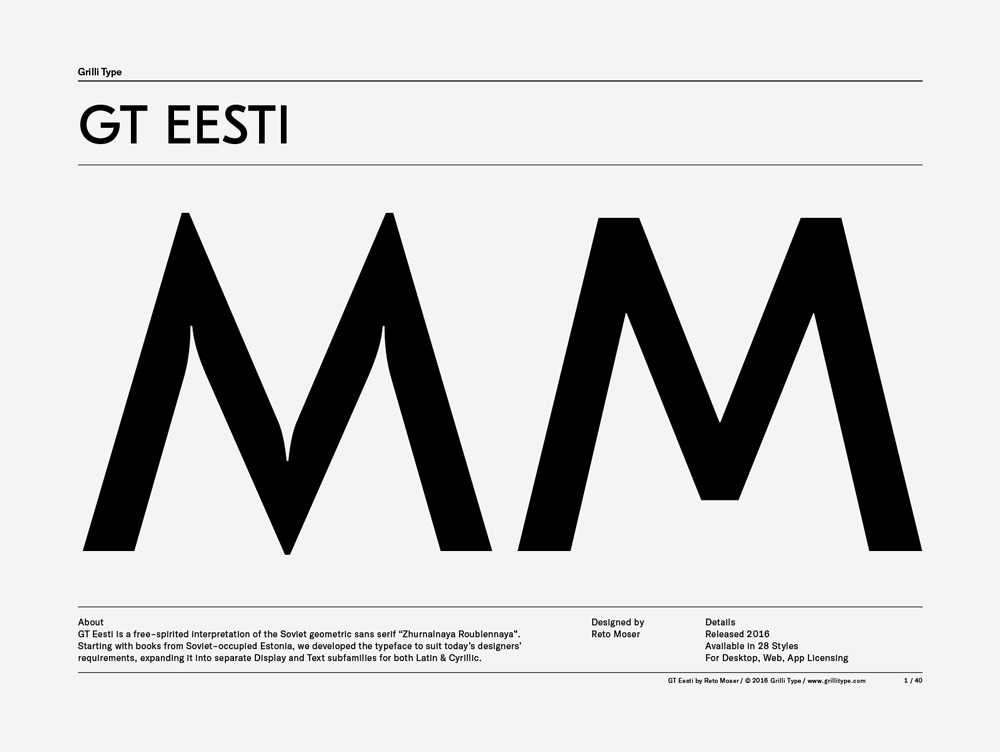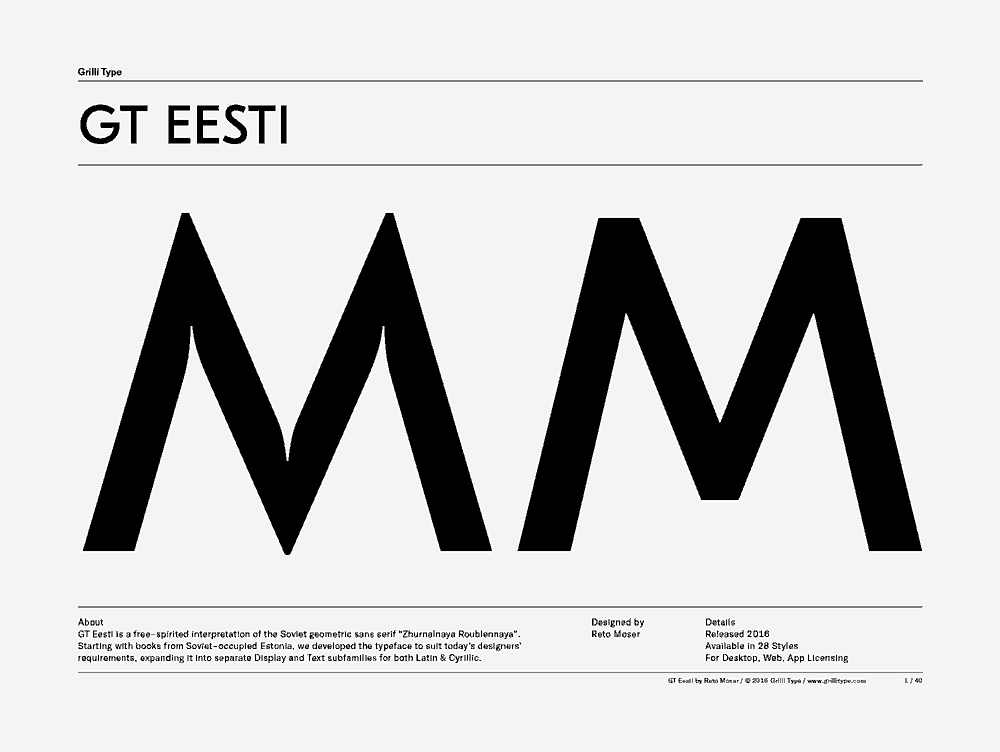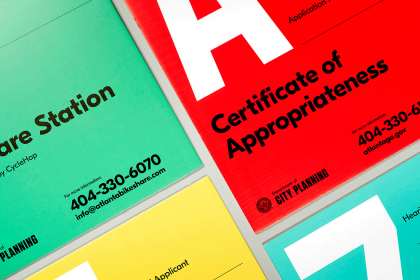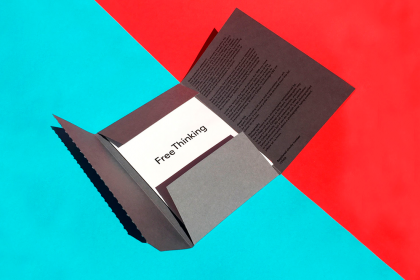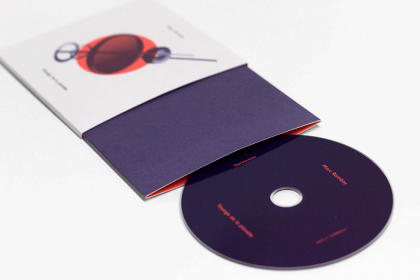GT Eesti
Family overview
- Text
- Ultra Light Italic
- Thin Italic
- Light Italic
- Book Italic
- Regular Italic
- Medium Italic
- Bold Italic
- Display
- Ultra Light Italic
- Thin Italic
- Light Italic
- Regular Italic
- Medium Italic
- Bold Italic
- Ultra Bold Italic
Subfamilies
- Text Ultra LightРапла город без муниципального статуса в западной части Эстонии, административный центр уезда Рапламаа и волостной центр и составная часть волости Рапла.
- Text Ultra Light ItalicKuressaare on linn Saaremaa lõunarannikul, Saare maakonna halduskeskus. Kuressaare on Eesti kõige läänepoolsem linn.
- Text ThinKunda on linn Lääne-Viru maakonnas. See asub Kunda jõe suudmealal. Kunda sai aleviõigused 1920. aastal kui aleviga liideti Lontova, rannaküla Maagerand ja Lähta moonaküla. 1. maist 1938. aastal on Kundal linnaõigused.
- Text Thin ItalicСауэ город, расположенный в северной части Эстонии в уезде Харьюмаа. Является отдельным муниципальным образованием и не входит в состав какой-либо волости. Получил право города 25 августа 1993 года. Население — 6,0 тыс. человек (2012), 93 % из которых — эстонцы.
- Text LightКохтла-Ярве город на северо-востоке Эстонии. Расположен на залежах горючего сланца, добыча и переработка которого являются основными видами деятельности в городе.
- Text Light ItalicMaardu on linn Harjumaal Muuga lahe kaldal, mis ulatub Maardu järvest Pirita jõeni; piirneb Viimsi ja Jõelähtme vallaga. Linnas elab üle 17,000 inimese.
- Text BookJõgeva is a small town in Estonia with a population of around 6000 people. It is the administrative centre of Jõgeva County.
- Text Book ItalicКурессааре эст. Kuressaare город в Эстонии, на острове Сааремаа, когда-то так называли весь архипелаг, а остров называли Курессааре, крупнейший населённый пункт и административный центр уезда Сааремаа.
- Text RegularPõlva is a town in southeastern Estonia, the capital of Põlva County, and the centre of Põlva Parish.
- Text Regular ItalicRapla is a town in central Estonia, the administrative centre of Rapla County and Rapla Parish. It has a population of 5,618.
- Text MediumКивиыли город в северо-восточной части Эстонии в уезде Ида-Вирумаа. Является самостоятельным городским муниципалитетом и не входит в состав какой-либо волости.
- Text Medium ItalicKärdla on Hiiu maakonna halduskeskus ja Hiiu valla sisene linn. Tegemist on ainsa linnaga maakonnas. Läbi linna voolavad Nuutri jõgi, Lumumba jõgi ja Kärdla oja
- Text BoldКохтла-Ярве город на северо-востоке Эстонии. Расположен на залежах горючего сланца, добыча и переработка которого являются основными видами деятельности в городе.
- Text Bold ItalicJõhvi on Jõhvi vallas Ida-Viru maakonnas asuv vallasisene linn, kus asub nii Jõhvi valla kui ka Ida-Viru maakonna halduskeskus.
- Settings
Typeface information
GT Eesti is a free-spirited interpretation of the Soviet geometric sans serif “Zhurnalnaya Roublennaya”. Starting with books from Soviet-occupied Estonia, we developed the typeface to suit today’s designers’ requirements, expanding it into separate Display and Text subfamilies for both Latin & Cyrillic.
Typeface features
OpenType features enable smart typography. You can use these features in most Desktop applications, on the web, and in your mobile apps. Each typeface contains different features. Below are the most important features included in GT Eesti’s fonts:
- SS01
- Circular dots
Österreich?!
- SS02
- Compact accents
RÜCKWÄRTS
- SS03
- Historical “ß”
Weisestraße
- SS04
- Alternate “w” and “v”
- (Text version only)
Privatweg
Typeface Minisite
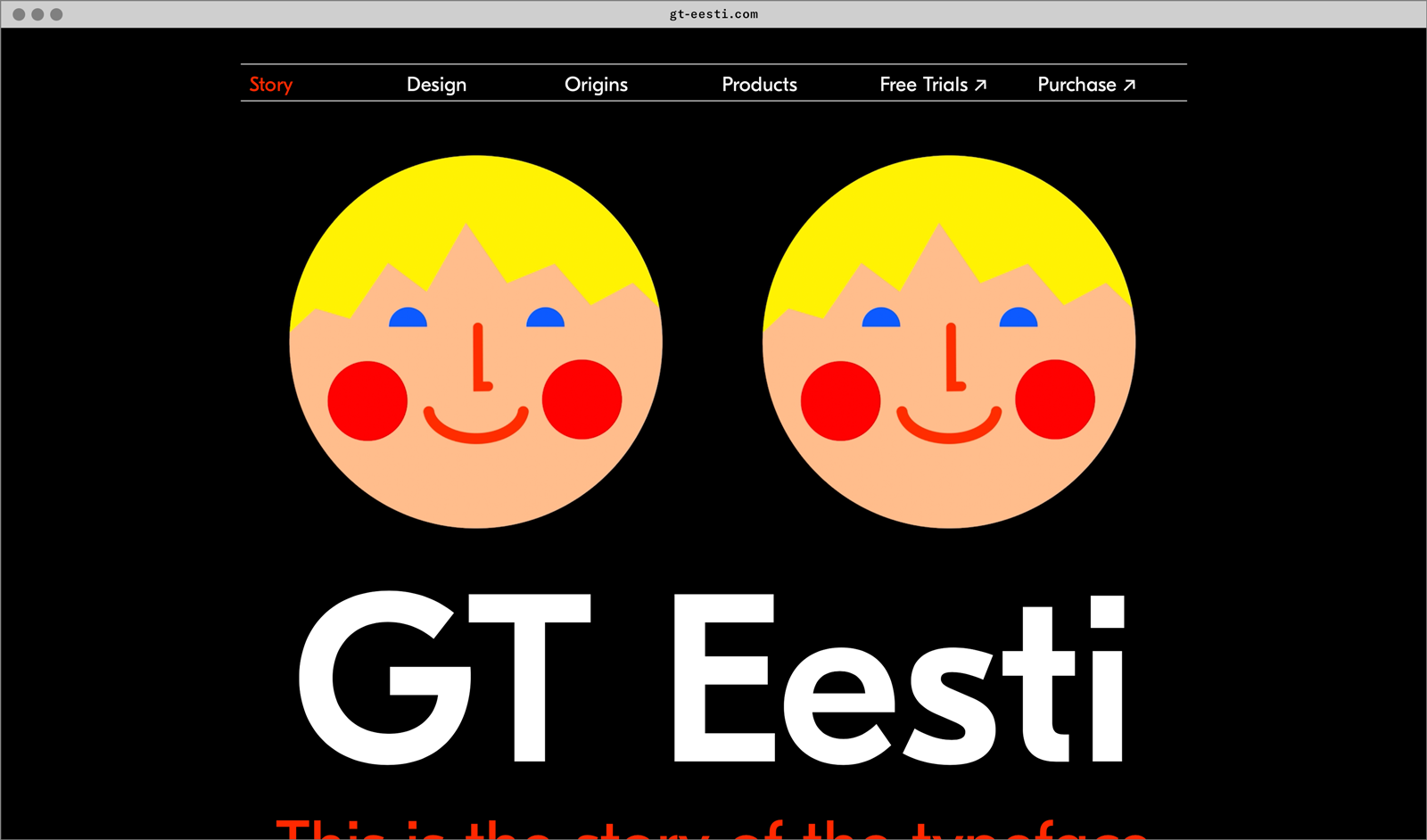
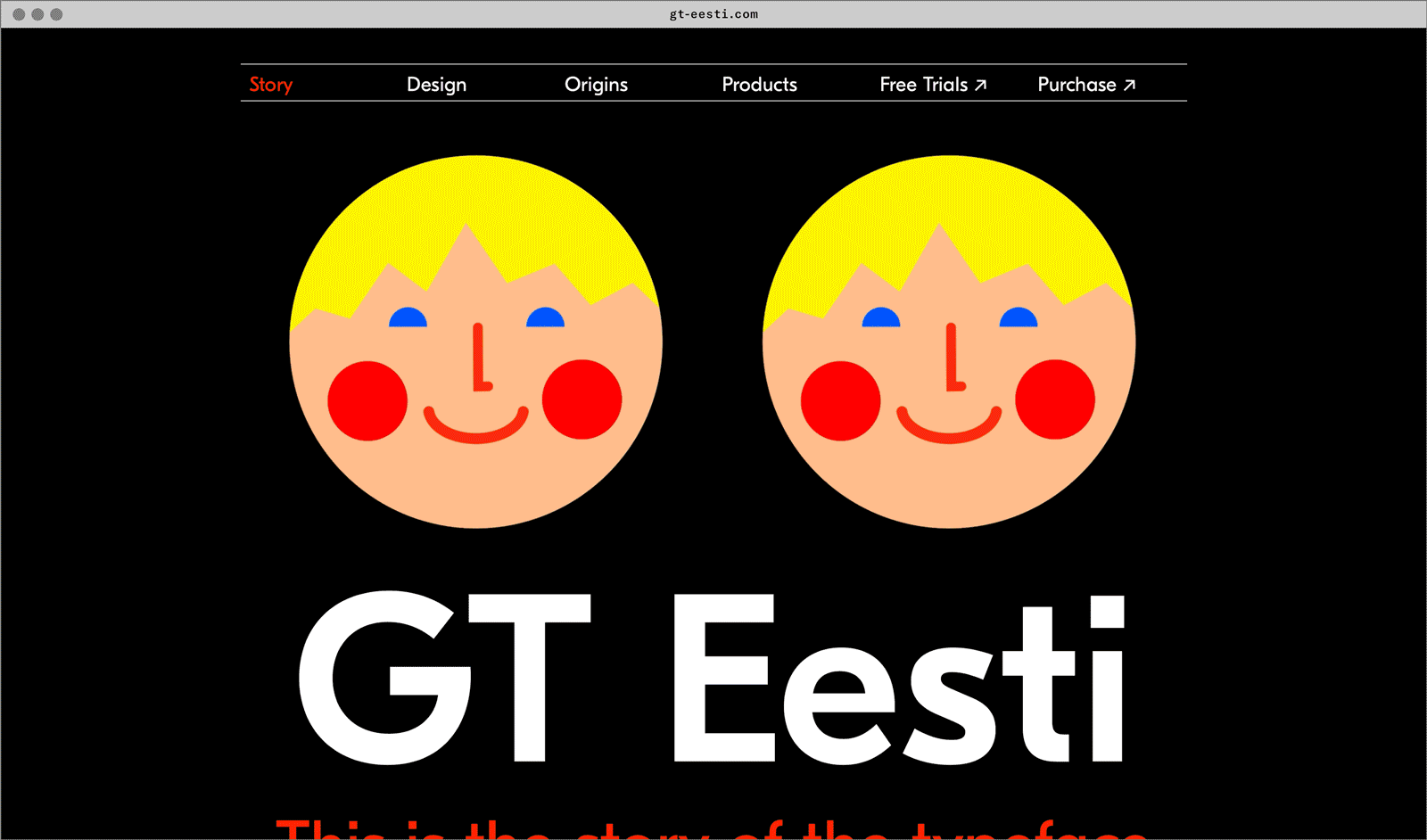
- Visit the GT Eesti minisite to discover more about the typeface family’s history and design concept.
GT Eesti in use
